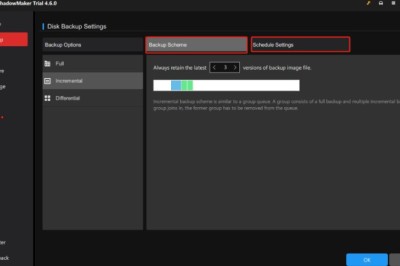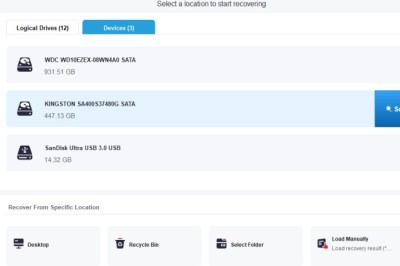views

Optimize the Market Research Capabilities of Social Networks
It is not always easy for companies to know how to capitalize on social media. A single measure of the relation of social media to return on investment (ROI) doesn’t exist, yet most businesses feel compelled to participate in social media — consumers seem to expect it and so do many of the employees in a business. Business decisions about the use of social media should be based on a clear agreement
about the goals and objectives of an enterprise’s participation in social media networks. There are four primary functions of social media: Monitoring, responding, amplifying, and leading consumer behavior. Each of these functions should be taken into consideration by a business enterprise before making a robust commitment to social media networks.
Monitoring Social Channels for Consumers Insights and Trends
Brand monitoring lets a company know what is being said about its products and services. Monitoring should be automatic or default social media function that is continuously occurring in the background. While monitoring does not require actively engaging with consumers, it can still produce actionable insights. A business might conduct sentiment analysis by assigning a negative or positive emotion to consumers’ online comments, or pinpoint where on a continuum that ranges from very positive to very negative customer posts or commits would best fit. Businesses may create their proprietary methods for sentiment scoring, or they may purchase an analytical product to assign sentiment scores. Bayesian network modeling, manual scoring, and the use of a lexicon or dictionary are all methods for analyzing consumer sentiment.
An additional and important function of monitoring is to listen with sufficient sensitivity to gain advance notice of any negative trends. An effective monitoring system will ensure that information obtained through the monitoring process is quickly shared with the appropriate business unit. Positive and negative information must be conveyed to communications and marketing, public relations, design and creative, and risk departments.
Responding to Consumers’ Comments
While it would be lovely to think that a business could engage in personal and conversational transactions with consumers who comment about their products, most of the conversations that are pinpointed for a response from an enterprise are about customer service, product or service dissatisfaction, or discover sales leads. As Web 2.0 expands opportunities for participation, reinforcing positive comments and countering negative comments is likely to take up more enterprise resources. As with any risk or negative public relations, a response must be provided as quickly as possible. Since speed is critical in a response to a crisis, or a trend that appears to be escalating in that direction, it is imperative that proactive monitoring of social media networks be conducted every day around the clock.
Amplifying the Positive Tone and Activity
Marketing activities that inherently include social motivation for deeper and broader brand engagement and social network sharing can act as amplifiers for the activities occurring in social media and for the overall current tone conveyed in consumer comments and posts. There are commonly three primary types of brand amplification in social media: (1) Recommendations and referrals; (2) Fostering the development and maintenance of communities; and (3) Brand advocacy.
If one considers the path to a customer purchase decision as a winding journey with consumer feedback at many points - rather than just a funnel that consumers pass through – it becomes more apparent how social media networks can influence transactions at their nexus. Consumer behavior can be influenced at every loop in the consumer purchase decision pathway. So it is the only marketing form that can make this claim. Research shows that the most effective social-media strategies aim for a few individual touchpoints, rather than trying to influence consumers at every stage in the purchase decision journey.
Leading Consumer Sentiment and Behavior Changes
The most proactive use of social media is the act of leading consumers to make enduring behavioral changes. Depending on where a consumer is on the path to a purchase decision, the form that leading takes will vary. For consumers who are in the early stages of the path, the focus may be on increasing brand awareness. Social media networks do this very efficiently, as they drive traffic to content on the Web that features a brand. Another touchpoint that generally makes very effective use of social media is at the time of a product launch. Social media can also provide forums for consumer input following a purchase. Consumer input at this point in the purchase decision pathway can contribute strongly to product development insights. The return on investment (ROI) for this function of social media networks is high.
Social Media Marketing Is Proving Its Worth
Because there is no widespread understanding of or confidence in social media marketing at the executive level, social media marketing budgets tend to be modest. To measure the ROI of social media marketing, it is necessary to first ensure a quality social media presence. Very often, this entails benchmarking companies that have demonstrated successful social media approaches. A straightforward theory of the contribution of social media marketing includes the following:
Improved Brand Perceptions
Social media’s impact and presence – when well executed - should result in improved brand perceptions, which result in a higher number of positive online comments and posts
Increased Social Sharing
Effective social sharing on social media networks should generate more clicks and Web traffic, which would drive up search placements.
Increased Rate of Sales
With improved brand perceptions and increased sharing volume, sales should be driven up. These higher sales rates should exceed any rate that the company could achieve through advertising expenditures, based on the average gross rating point (GRP).
The bottom line is that social media can influence consumer perceptions and behavior all along the purchase decision pathway. This is a significant challenge to internal communications, as it must transcend business units and functions. With communication about social media marketing flowing between and within functions, decision-making and lines of reporting become increasingly complex.
To use social media effectively for marketing, including complementing the broader marketing strategies a company has, it is clear that coordination across business units or multiple functions must take place in a way that makes the best use of technology, tools, data, and the talent of personnel. Certainly, the demand for these highly sophisticated and nontraditional ways of coordinating marketing activities and measuring outcomes will only increase as social media expands.






















Comments
1 comment
SMM panel
has a great effect on Social media marketing.